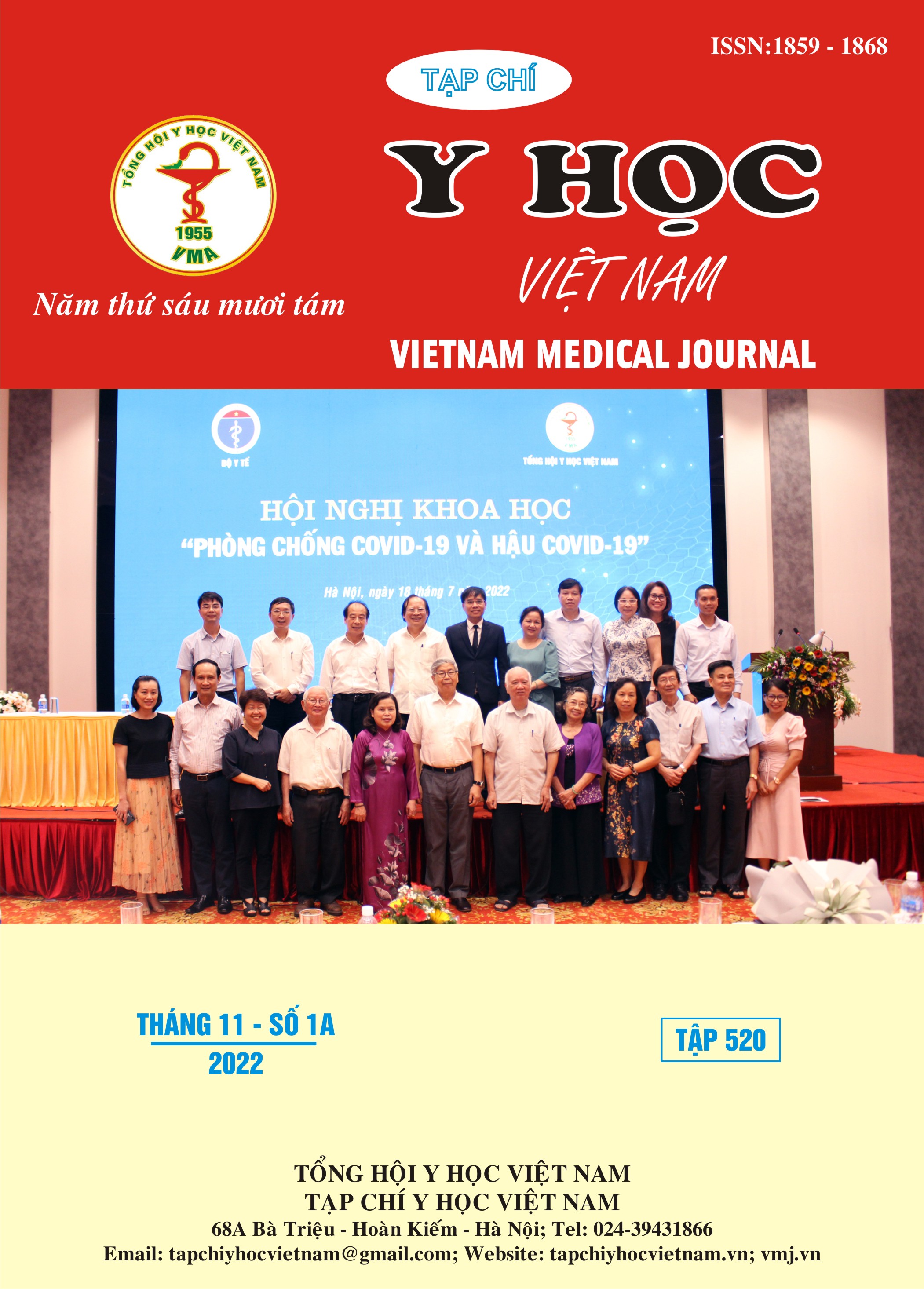PREDICTION FACTORS FOR THE SUCCESS OF HIGH-FLOW NASAL CANNULA OXYGEN THERAPY (HHFNC) IN PATIENTS WITH THE ACUTE EXACERBATION OF CHRONIC OBSTRUCTIVE PULMONARY DISEASE
Main Article Content
Abstract
Objectives: To evaluate of the prediction factors for the success of Heated and humidified high-flow nasal cannula (HHFNC) in patients with exacerbation of chronic obstructive pulmonary disease (COPD). Methods: Pre and post- intervention study on 32 patients with COPD exacerbation used HHFNC support. Results: the success rate with HHFNC was 65.6%. In the successful group, vital signs (heart rate, respiratory rate, SpO2 and blood pressure) and arterial blood gas (pH, PaO2, PaO2/FiO2) improved gradually (p<0.001). In the failure group, the pH decreased and PaCO2 increased significantly (p<0.05). Mechanical ventilation parameters (Flow, FiO2) decreased in the successful group and increased in the failure group during study period (p<0.001; p<0.05). PaCO2 with cut-off ≥ 62 mmHg (area under ROC curve, AUC = 0.8247), HACOR with cut-off ≥ 4 (AUC = 0.8636), ROX with cut-off ≥ 7,98 (AUC = 0.8030) provided high sensitivity, specificity, positive predictive value and negative predictive value. Conclusion: The successful prediction factors for HHFNC were PaCO2, HACOR and ROX at the initiation of the non-invasive ventilation for patients with the acute exacerbation of COPD.
Article Details
Keywords
Noninvasive mechanical ventilation, HHFNC, ACOPD
References
2. Duan J., Zeng J., Deng P., et al. (2021). High-Flow Nasal Cannula for COVID-19 Patients: A Multicenter Retrospective Study in China. Front Mol Biosci, 8, 639100.
3. Goh K.J., Chai H.Z., Ong T.H., et al. (2020). Early prediction of high flow nasal cannula therapy outcomes using a modified ROX index incorporating heart rate. J Intensive Care, 8, 41.
4. Lun C.-T., Leung C.-K., Shum H.-P., et al. (2022). Predictive factors for high-flow nasal cannula failure in acute hypoxemic respiratory failure in an intensive care unit. Lung India Off Organ Indian Chest Soc, 39(1), 5–11.
5. Kansal A., Dhanvijay S., Li A., et al. (2021). Predictors and outcomes of high-flow nasal cannula failure following extubation: A multicentre observational study. Ann Acad Med Singapore, 50(6), 467–473.
6. Phan Thị Lan Hương (2020), Áp dụng bảng điểm Hacor để dự đoán kết quả thành công của thở máy không xâm nhập trong suy hô hấp cấp, Luận văn Thạc sĩ. Trường Đại học Y Hà Nội.
7. Duan J., Wang S., Liu P., et al. (2019). Early prediction of noninvasive ventilation failure in COPD patients: derivation, internal validation, and external validation of a simple risk score. Ann Intensive Care, 9(1), 108.
8. Roca O., Caralt B., Messika J., et al. (2019). An Index Combining Respiratory Rate and Oxygenation to Predict Outcome of Nasal High-Flow Therapy. Am J Respir Crit Care Med, 199(11), 1368–1376.


